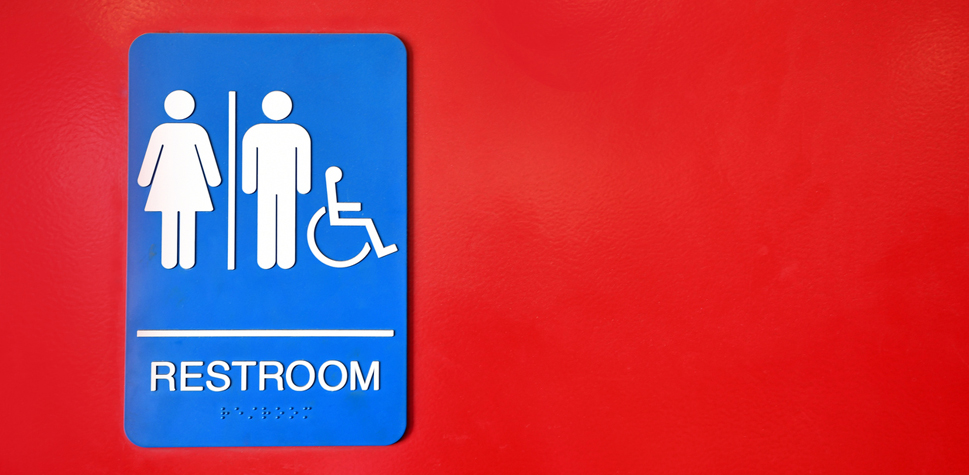ADA Signs: Essential Devices for Inclusive Atmospheres
ADA Signs: Essential Devices for Inclusive Atmospheres
Blog Article
Exploring the Secret Features of ADA Indications for Boosted Availability
In the world of accessibility, ADA indicators offer as silent yet powerful allies, guaranteeing that spaces are navigable and inclusive for individuals with specials needs. By incorporating Braille and tactile aspects, these indicators break obstacles for the aesthetically damaged, while high-contrast shade plans and legible fonts cater to diverse visual needs.
Significance of ADA Conformity
Making sure conformity with the Americans with Disabilities Act (ADA) is important for promoting inclusivity and equivalent gain access to in public rooms and work environments. The ADA, passed in 1990, mandates that all public facilities, companies, and transportation services suit individuals with handicaps, ensuring they appreciate the very same rights and chances as others. Compliance with ADA requirements not just fulfills lawful responsibilities however additionally boosts a company's credibility by showing its commitment to diversity and inclusivity.
Among the essential elements of ADA conformity is the execution of accessible signage. ADA indicators are developed to make sure that people with handicaps can quickly navigate through rooms and buildings. These indicators have to comply with particular standards concerning size, font, shade contrast, and placement to ensure exposure and readability for all. Effectively implemented ADA signs aids remove barriers that people with impairments frequently come across, thus advertising their independence and self-confidence (ADA Signs).
Moreover, sticking to ADA laws can alleviate the danger of lawful consequences and potential penalties. Organizations that stop working to comply with ADA standards may encounter lawsuits or penalties, which can be both destructive and monetarily burdensome to their public photo. Therefore, ADA conformity is essential to promoting a fair environment for every person.
Braille and Tactile Components
The unification of Braille and responsive components into ADA signage personifies the concepts of access and inclusivity. These functions are vital for individuals that are visually damaged or blind, allowing them to browse public areas with higher independence and self-confidence. Braille, a responsive writing system, is vital in offering composed information in a style that can be conveniently viewed through touch. It is commonly put below the corresponding message on signage to guarantee that individuals can access the details without visual aid.
Tactile components extend beyond Braille and consist of raised symbols and personalities. These components are made to be discernible by touch, enabling people to identify space numbers, washrooms, leaves, and various other essential locations. The ADA establishes specific standards relating to the dimension, spacing, and placement of these responsive aspects to optimize readability and make sure uniformity across different atmospheres.

High-Contrast Color Pattern
High-contrast color schemes play a pivotal duty in enhancing the visibility and readability of ADA signage for people with aesthetic disabilities. These systems are crucial as they maximize the distinction in light reflectance in between text and background, ensuring that indicators are quickly noticeable, even from a distance. The Americans with Disabilities Act (ADA) mandates making use of details my review here color contrasts to suit those with limited vision, making it a crucial element of compliance.
The effectiveness of high-contrast shades depends on their capability to stand apart in numerous lighting conditions, consisting of dimly lit atmospheres and areas with glow. Usually, dark message on a light background or light text on a dark history is utilized to attain optimal contrast. Black text on a yellow or white history gives a raw aesthetic difference that assists in quick acknowledgment and understanding.

Legible Fonts and Text Dimension
When considering the style of ADA signage, the choice of understandable typefaces and suitable message size can not be overstated. The Americans with Disabilities Act (ADA) mandates that fonts must be not italic and sans-serif, oblique, manuscript, very ornamental, or of unusual form.
According to ADA standards, the minimal text height need to be 5/8 inch, and it must increase proportionally with viewing distance. Consistency in message size adds to a natural visual experience, aiding individuals in navigating environments efficiently.
Additionally, spacing in between lines and letters is important to clarity. Sufficient spacing prevents characters from showing up crowded, improving readability. By sticking to these requirements, designers can substantially boost ease of access, making sure that signage serves its desired objective for all people, no matter of their visual abilities.
Efficient Placement Strategies
Strategic placement of ADA signs is crucial for making the most of availability and making certain compliance with legal standards. Properly positioned indications guide people with impairments effectively, helping with navigation in public rooms. Trick considerations include proximity, height, and exposure. ADA standards state that indicators need to be placed at an elevation between 48 to 60 inches from the ground to like this ensure they are within the line of view for both standing and seated people. This standard height array is important for inclusivity, enabling mobility device users and people of varying elevations to gain access to details effortlessly.
Additionally, indicators should be put adjacent to the lock side of doors to allow easy identification before access. Consistency in sign placement throughout a center improves predictability, decreasing confusion and enhancing general user experience.

Final Thought
ADA signs play a vital role in advertising ease of access by integrating features that address the needs of individuals with specials needs. Including Braille and tactile components makes sure essential info is obtainable to the aesthetically impaired, while high-contrast color design and readable sans-serif fonts boost presence throughout various lighting problems. Reliable positioning methods, such as suitable mounting heights and calculated places, better help with navigation. These aspects jointly promote an inclusive environment, emphasizing the significance of ADA compliance in making certain equal access for all.
In the world of availability, ADA indicators serve as quiet yet effective allies, making certain that areas are accessible and comprehensive More Help for people with specials needs. The ADA, enacted in 1990, mandates that all public facilities, companies, and transportation services fit individuals with disabilities, ensuring they enjoy the same rights and opportunities as others. ADA Signs. ADA indicators are created to make certain that individuals with specials needs can easily navigate with structures and rooms. ADA guidelines state that signs need to be installed at an elevation in between 48 to 60 inches from the ground to guarantee they are within the line of sight for both standing and seated people.ADA indicators play an important function in advertising availability by incorporating functions that resolve the needs of people with handicaps
Report this page